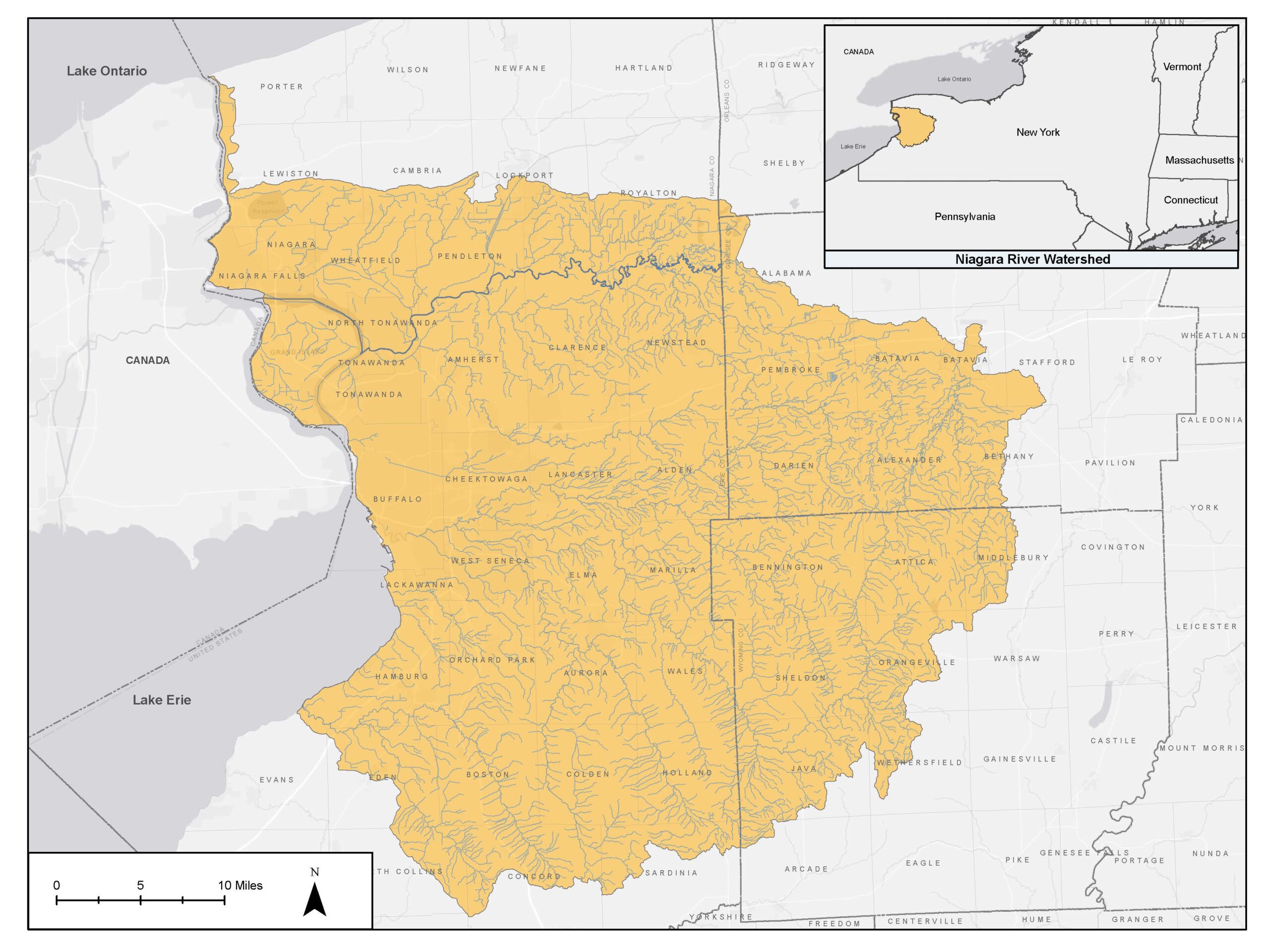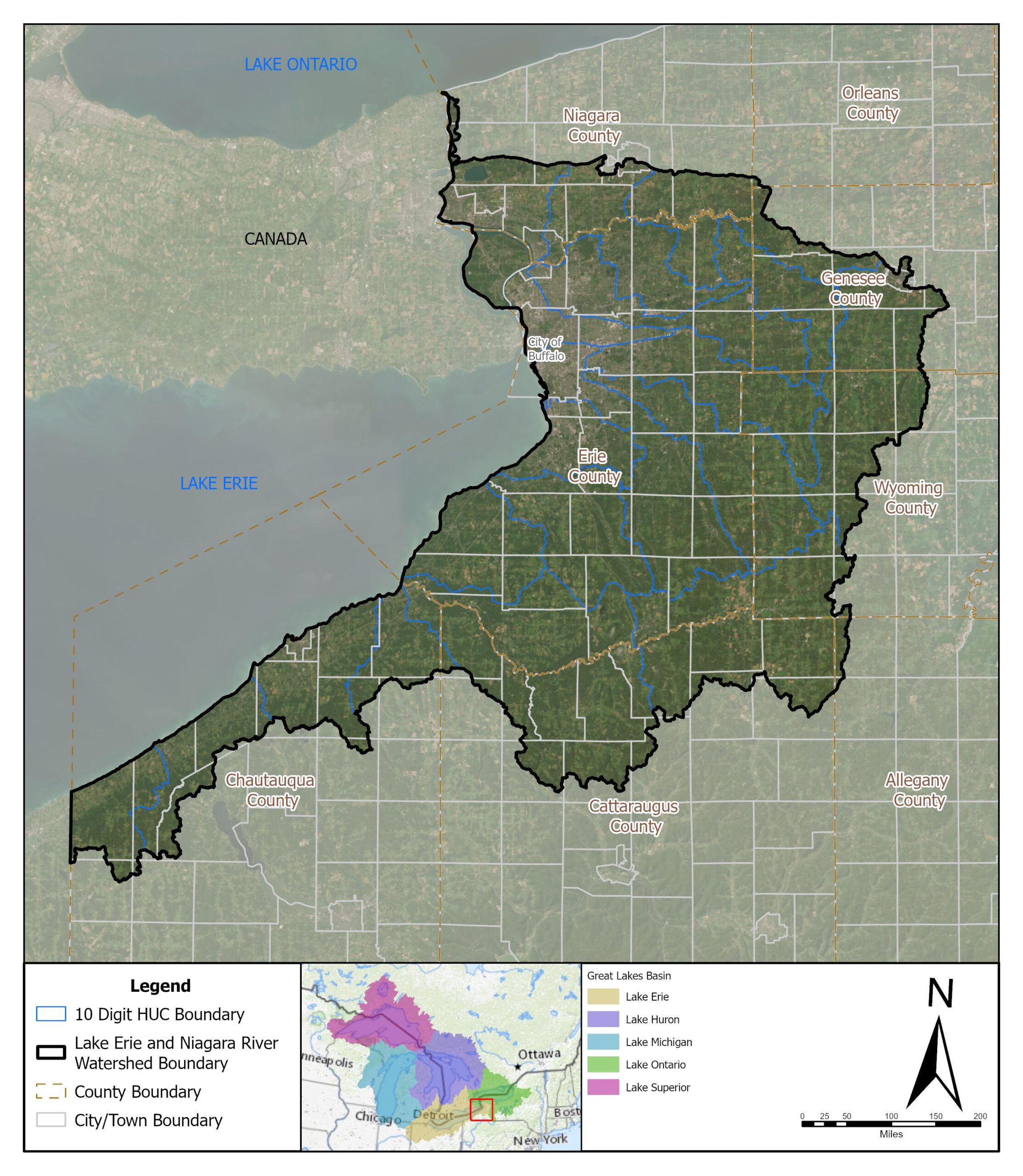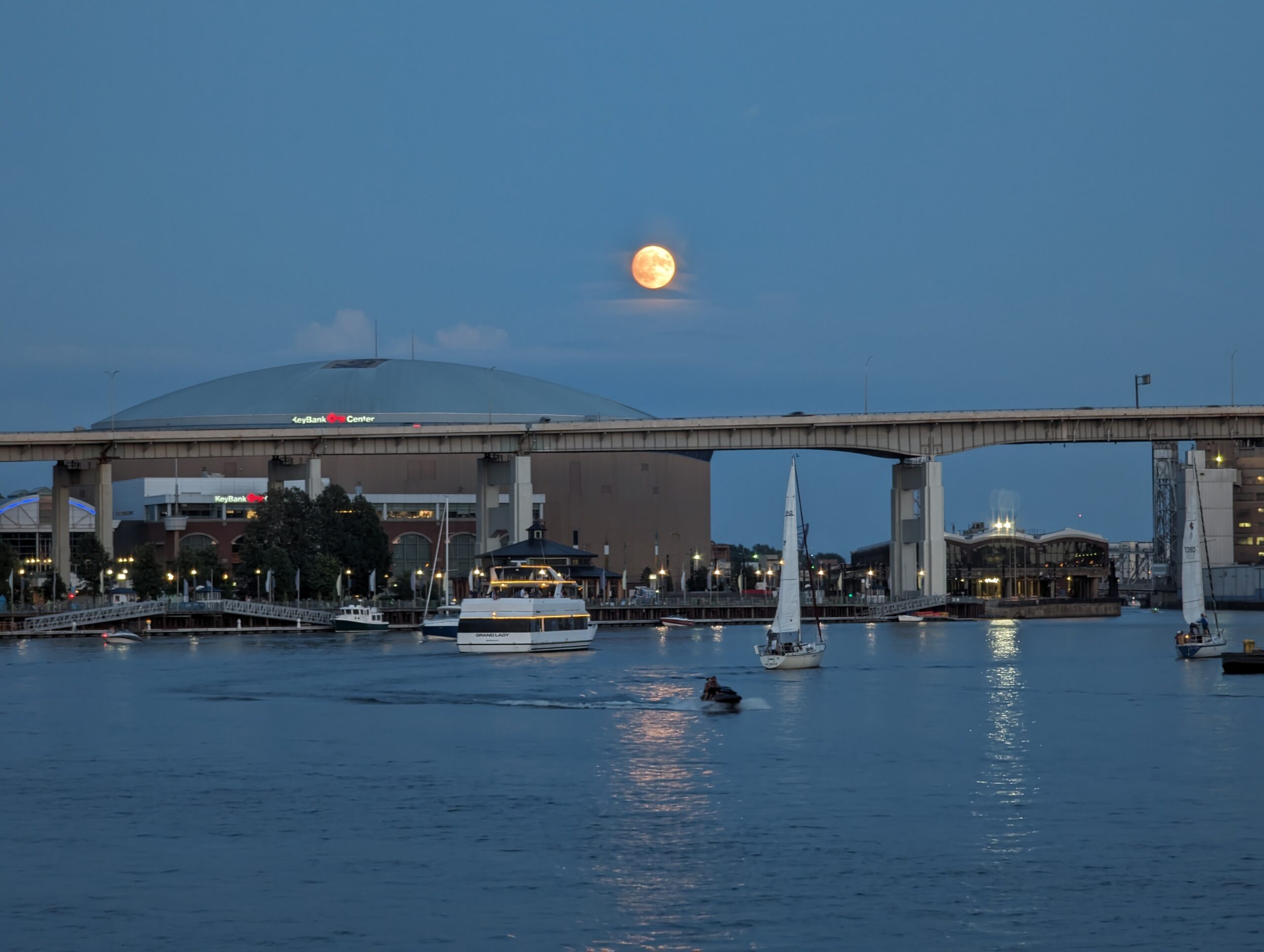Action Plan
As Buffalo Niagara Waterkeeper expands its jurisdiction in Western New York, this provides an outline of recommended actions to improve conditions throughout the watershed.
Why is our region important?
This 2024 Action Agenda aims to improve conditions throughout Western New York. The health of the waters of the Niagara River Watershed, including all the streams, creeks and rivers, and Lake Erie and Lake Ontario, have a direct impact on the ongoing revitalization of our ecology, economy, and community.
The regional Action Agenda can guide collaboration and prioritization of activities to accelerate improvement of the health of our waters. Our globally recognized success story of a community-driven Buffalo River restoration, combined with the lessons learned of public, private and non-profit sector coordination, provides a model for freshwater communities around the world.
Western New York is located in the heart of the largest freshwater system in the world. Geographically located between Lake Erie and Lake Ontario, our region’s past, present and future is defined by the health of, and access to, our fresh water. Our community is part of the Niagara River Watershed, which spans 1,440 square miles over five counties (Erie, Niagara, Genesee, Orleans and Wyoming), and contains 3,193 miles of waterways.
The watershed also contains two federally-designated “Areas of Concern” (AOC) in the Buffalo River and Niagara River, where municipal and industrial pollution, habitat loss, and water diversion has severely impaired the water quality and uses of the rivers and surrounding lands. These AOCs have been the focus of remediation and restoration initiatives throughout the region, and now, where the clean-up work is underway or completed, present a vital opportunity for water-based economic activity in the region. While the AOCs represent the bulk of restoration projects, conservation of pristine headwaters in the upper watershed that provide clean drinking water remains a major regional focus.
Expanded watershed coverage
Buffalo Niagara Waterkeeper has expanded its jurisdiction of to include the region along the Eastern shoreline of Lake Erie extending down to the Pennsylvania border.

This newly expanded jurisdiction of 2,381 miles across 8 counties in WNY allows Buffalo Niagara Waterkeeper’s work to directly deliver progress toward State-level plans, such as the Great Lakes Action Agenda, and Federal initiatives, such as the Great Lakes Restoration Initiative.

Former watershed boundary covered by Buffalo Niagara Waterkeeper.

New watershed boundary covered by Buffalo Niagara Waterkeeper.
The expansion enables Buffalo Niagara Waterkeeper to work within a functional and logical watershed boundary that encompasses all the land and waterways within the WNY region that drain to the Niagara River and Lake Erie in NY. This new jurisdiction allows for Buffalo Niagara Waterkeeper to sample, monitor, assess, and conduct restoration, education, and advocacy activities comprehensively across WNY communities and to fill gaps left by the former jurisdictional boundaries along the Lake Erie shoreline and tributary communities, to the Pennsylvania border. ln the context of planning for Great Lakes coastal and climate resiliency, it’s imperative and logical to include all the communities along NY’s Lake Erie and Niagara River shorelines.
After nearly three decades of scientific research, water policy development, restoration implementation, and monitoring of our region’s water resources, this Action Agenda has been developed to address both ongoing and emerging challenges. This agenda is based on four basic principles that when implemented together will prioritize actions that can best support and protect our support waters for future generations. The following is a summary of proposed actions.



